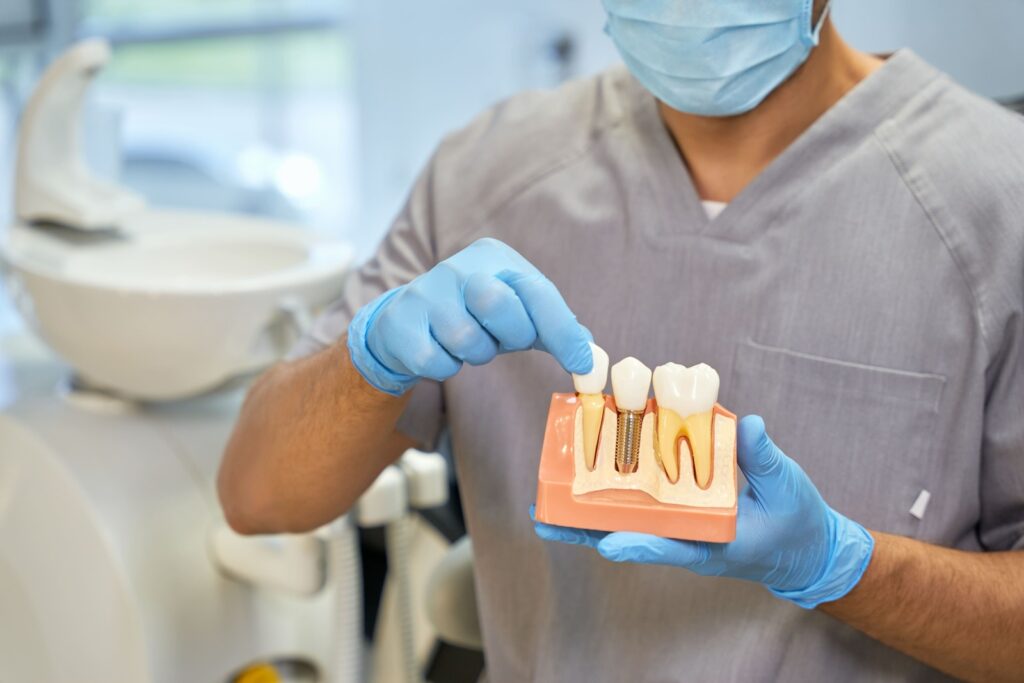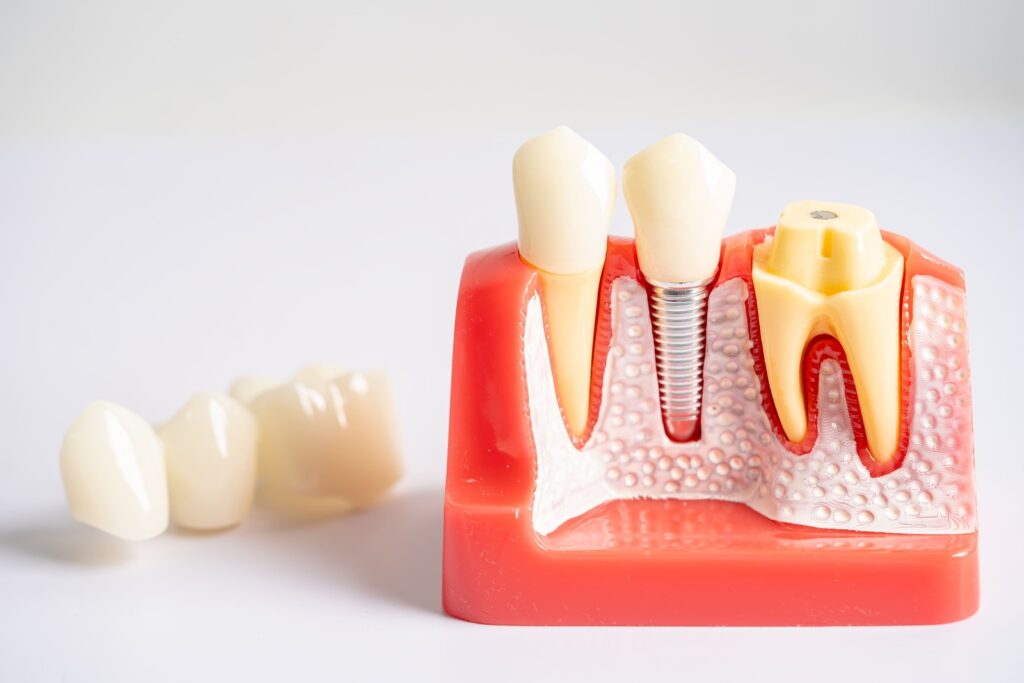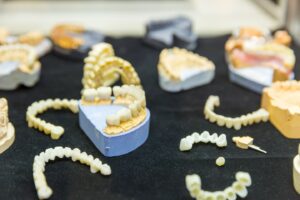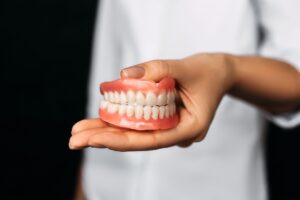Dental implants and bone grafts play a crucial role in restoring oral health. When a tooth is missing or severely damaged, it not only affects the aesthetics but also the functionality of the mouth. Dental implants are titanium posts that are surgically placed in the jawbone to serve as artificial tooth roots, providing a stable foundation for replacement teeth. Bone grafts, on the other hand, are used to regenerate or augment the jawbone for successful implant placement.
The healing process is a vital component of achieving successful outcomes after dental implant and bone graft procedures. It involves the integration of the implant or graft with the surrounding bone, as well as the adaptation of the soft tissue. This article will provide a comprehensive overview of the healing process for dental implants and bone grafts, guiding patients through the various stages and necessary precautions for optimal results.
Dental Implants Procedure
The dental implant procedure consists of several steps that are carefully executed to ensure the best possible outcome.
Pre-operative Evaluations and Preparations
Prior to the implant placement, a thorough evaluation is conducted to determine the patient’s suitability for the procedure. This includes assessing the patient’s dental and medical history, performing diagnostic tests such as X-rays and CT scans, and evaluating bone density and quality. These evaluations help the dentist to develop an individualized treatment plan and identify any potential challenges that may arise during the procedure.
Placement of the Dental Implant
Once the patient has been deemed a suitable candidate for dental implants, the surgical procedure begins. Local anesthesia is administered to ensure the patient’s comfort. Then, a pilot hole is created in the jawbone, followed by the careful insertion of the dental implant. The primary stability of the implant is assessed to ensure proper integration with the surrounding bone.
Closure and Post-operative Care Instructions
After the dental implant has been placed, the incision is closed using appropriate closure methods such as sutures or tissue adhesives. The patient is then provided with detailed post-operative care instructions to facilitate the healing process. This includes guidelines for pain management, swelling, and bleeding, as well as the importance of maintaining proper oral hygiene. It is crucial for patients to follow these instructions diligently to minimize the risk of complications and ensure successful healing.
Bone Grafts Procedure
In cases where the jawbone lacks sufficient volume or density to support dental implants, a bone graft may be necessary. This procedure involves the placement of grafting materials to regenerate or augment the bone. The bone grafting process typically follows several steps:
Pre-operative Evaluations and Preparations
As with dental implant procedures, pre-operative evaluations are essential in determining the appropriate bone grafting approach for each patient. Factors such as the patient’s medical and dental history, bone quality and volume, and the availability of grafting materials are carefully considered. The dentist will discuss the various options for grafting materials, such as autogenous (bone harvested from the patient’s own body), allogenic (bone obtained from a donor), or synthetic materials. Each option has its advantages and disadvantages, and the decision is made based on individual needs and preferences.
Harvesting or Use of Grafting Material
In the case of autogenous grafts, the dentist will harvest the bone from a suitable donor site, such as the patient’s chin, jaw, or hip. This procedure is performed under local anesthesia, and the harvested bone is then prepared for placement in the recipient site. Allogenic grafts, on the other hand, are obtained from a tissue bank and do not require harvesting from the patient’s body. Synthetic grafting materials, such as calcium-based or biocompatible substances, are also commonly used in dental procedures.
Placement of the Bone Graft
After the grafting material has been prepared, it is carefully placed in the recipient site and secured in place. The dentist will ensure that the graft is properly positioned and fixated to promote stability and integration with the surrounding bone. The healing timeline for bone grafts can vary, but it generally takes several months for the graft to fuse with the existing bone.
Healing Timeline and Expected Outcomes
The success of a bone graft relies on the body’s natural healing process and the ability of the graft to integrate with the existing bone. The healing timeline can vary depending on several factors, including the patient’s overall health, bone quality and volume, and the specific grafting materials used. It is important for patients to understand that the healing process takes time and requires patience. Regular follow-up visits with the dentist are crucial to monitor progress and address any concerns that may arise.

The Healing Process for Dental Implants and Bone Grafts
Both dental implants and bone grafts require a period of healing to ensure successful outcomes. The healing process involves several stages that are essential for proper integration and stability.
The healing process for dental implants includes:
Osseointegration and Bone Formation
After the implant has been placed, a process known as osseointegration takes place. This refers to the direct fusion of the implant with the surrounding bone. The implant serves as an artificial tooth root and stimulates the bone to grow around it, providing a stable foundation for the replacement tooth. The length of time required for osseointegration varies for each patient but typically takes several months.
Soft Tissue Healing and Adaptation
In addition to bone integration, the soft tissues surrounding the implant also require time to heal and adapt. The gums and other soft tissues need to form a seal around the implant to provide protection and stability. It is crucial for patients to practice good oral hygiene during this healing period to prevent infection and ensure proper tissue adaptation.
Loading Protocols and Implant Stability Assessment
Once the healing process is complete, the dentist will determine the appropriate loading protocol for the implant. This refers to the placement of the replacement tooth or prosthetic on the implant. The stability of the implant is assessed to ensure that it can withstand normal oral functions such as chewing and biting. In some cases, a temporary restoration may be placed initially, followed by the permanent restoration once the implant has fully integrated into the bone.
Complications and Potential Risks
While dental implants and bone grafts have a high success rate, there are potential complications and risks associated with the healing process. It is important for patients to be aware of these risks and to seek prompt dental care if any issues arise.
Some of the potential complications include:
- Infection: Proper oral hygiene practices and regular follow-up visits are crucial to minimize the risk of infection.
- Implant failure: Factors such as poor bone quality, improper implant placement, or systemic conditions can contribute to implant failure.
- Graft rejection: In some cases, the body may reject the grafting material, leading to complications and the need for revision surgery.
By closely following post-operative instructions, maintaining proper oral hygiene, and attending regular dental check-ups, patients can minimize these risks and ensure successful healing.
Tips for Faster Healing and Optimal Results
Patients can actively contribute to the healing process by following these tips:
Proper Oral Hygiene Practices
Keeping the oral cavity clean and free from bacteria is essential for successful healing. Patients should brush their teeth twice a day using a soft-bristle toothbrush and fluoride toothpaste. Flossing and using an antimicrobial mouthwash are also important for maintaining oral hygiene.
Diet Modifications and Nutrition
A balanced diet rich in vitamins and minerals is crucial for optimal healing. Patients should avoid hard and chewy foods that may exert excessive pressure on the implant or graft site. Instead, focus on consuming soft and nutritious foods, such as soups, yogurts, and smoothies.
Avoidance of Smoking and Alcohol Consumption
Smoking and alcohol consumption can hinder the healing process and increase the risk of complications. It is recommended to refrain from smoking and limit alcohol intake during the healing period to promote optimal healing and reduce the risk of implant failure.
Conclusion
The healing process for dental implants and bone grafts is a crucial aspect of achieving successful outcomes. Patients must understand the importance of following post-operative instructions, maintaining proper oral hygiene practices, and attending regular follow-up visits with their dentist. By doing so, patients can minimize complications and achieve optimal results, restoring their oral health and overall well-being.
For those in Miami, Florida, Ultrasmile Miami offers a variety of dental services, including dental implants and bone grafts, provided by the best professionals. Their team is dedicated to delivering high-quality care and ensuring the best possible experience for their patients.







